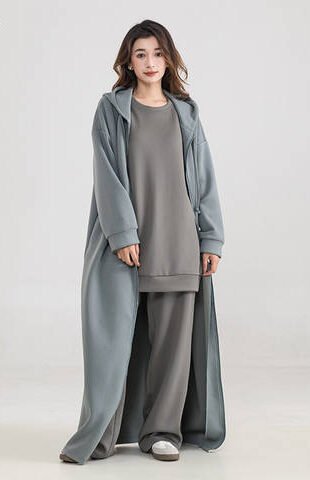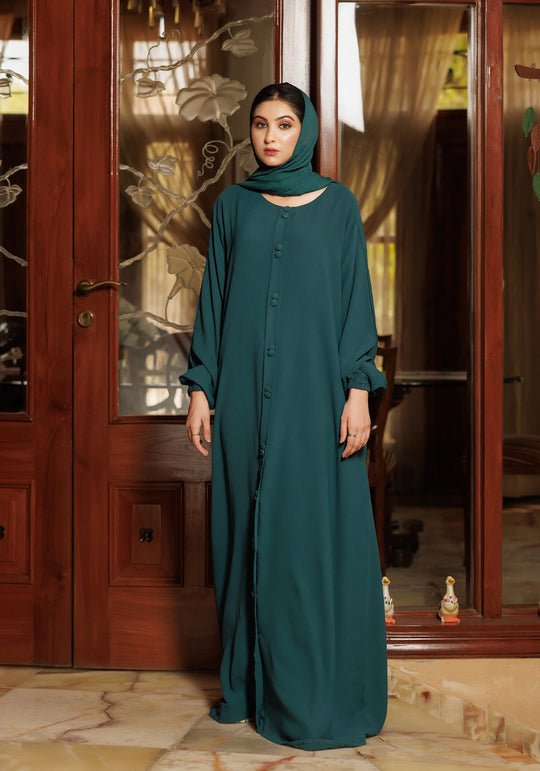Introduction In the world of fashion, few garments carry as much cultural depth and timeless elegance as the abaya. Traditionally worn by Muslim women across the Middle East and North Africa, the abaya was once seen purely as a religious or cultural garment, primarily worn to maintain modesty and respect. However, over time, the abaya has gracefully made its way from tradition to trend—evolving into a global fashion icon celebrated for its style, grace, and modern flair. Once characterized by plain black fabric and simple silhouettes, today’s abayas come in a wide variety of colors, fabrics, patterns, and designs. Whether it’s a velvet abaya for winter, a chiffon open-style abaya for summer, or a luxuriously embroidered evening abaya for events—this once simple cloak now has a bold voice in the world of modern fashion. Influencers, designers, and women around the world are embracing the abaya not only for its religious and cultural values but also for its chic versatility. Let’s dive into the beautiful journey of how the abaya evolved from a cultural necessity to a global trendsetting outfit for the modern woman. ✨ A Glimpse Into the History of the Abaya The abaya traces its roots back centuries and has always symbolized modesty, protection, and respect. It originated in the Arabian Peninsula and became widely known across Islamic cultures as a garment designed to cover a woman’s body in public spaces. It traditionally featured a full-length, loose fit, and was usually made from black fabric to preserve simplicity and uniformity. For many women, the abaya represented more than just clothing—it was a way of life, a sign of devotion, and a symbol of cultural identity. While its religious significance remains strong, societal shifts and the rise of modest fashion have given the abaya a much more dynamic role. 🌍 The Global Rise of Modest Fashion Modest fashion is no longer a niche—it’s a global movement. With social media platforms like Instagram and Pinterest, fashion bloggers and influencers from diverse backgrounds have spotlighted the beauty of modest dressing. Abayas, hijabs, kaftans, and maxi dresses are now featured on major runways, magazine covers, and luxury fashion lines. Designers in the UAE, Saudi Arabia, Indonesia, and even Europe are reimagining the abaya. They blend modesty with modern cuts, intricate embroidery, colorful patterns, and luxurious fabrics like silk, satin, and velvet. The demand for modest fashion is not only coming from Muslim women but from style-savvy women everywhere who appreciate the elegance and ease of flowing, covered clothing. 🧵 Modern Designs & Styles of Abayas Modern abayas are as versatile as they are stunning. Here are some of the most popular contemporary abaya styles: This variety means that abayas are no longer reserved for specific cultural practices—they are wearable art that suits all styles and occasions. 💼 Why Modern Women Are Embracing Abayas Whether Muslim or non-Muslim, women today are choosing abayas for several practical and stylish reasons: 1. Comfort and Confidence Abayas are loose-fitting, breathable, and comfortable to wear, especially in hot climates. They offer body coverage while allowing freedom of movement. 2. Stylish Versatility From formal to casual settings, abayas can be dressed up or down. Paired with heels, handbags, and the right accessories, they create an elegant, effortless look. 3. Modest Yet Modern Many women are turning to modest fashion as a personal choice, and the abaya allows them to express faith, modesty, and style all at once. 4. Inclusivity for All Sizes Abayas are universally flattering, making them an inclusive garment for all body types—curvy, petite, or tall. 5. Cultural Pride For women in the Muslim world, wearing the abaya is a source of pride and a visible expression of faith and heritage. 🛍️ Abayas in the Fashion Industry Major fashion brands are recognizing the global appeal of abayas. Brands like Dolce & Gabbana, Oscar de la Renta, and even fast-fashion giants like H&M have introduced modest fashion lines, featuring abaya-like garments or modest dresses. Social media influencers and modest fashion bloggers have further propelled the abaya into the spotlight. Through reels, styling tips, and aesthetic outfit posts, they’ve shown the world how modest clothing can be glamorous and empowering. ❓ Frequently Asked Questions (FAQ) Q1: Are abayas only black in color? A: No. While black is traditional, modern abayas come in a wide range of colors including nude, pastel, navy, burgundy, olive green, and more. Many are even printed or color-blocked. Q2: Can abayas be worn in Western countries? A: Yes, many women around the world wear abayas for their comfort and fashion appeal. In fact, many Western modest fashion influencers style abayas as everyday or occasion wear. Q3: Are abayas suitable for non-Muslim women? A: Absolutely! The abaya has become a global fashion trend. Anyone can wear it to express elegance and modesty, regardless of faith or background. Q4: What fabric is best for summer abayas? A: Lightweight fabrics like chiffon, cotton, crepe, or nida are ideal for hot climates. They allow breathability and comfort throughout the day. Q5: How do I accessorize an abaya? A: Style it with statement jewelry, belts, handbags, sunglasses, or a stylish pair of shoes. A matching hijab or turban can enhance the overall look. ✅ Conclusion: A Journey That Blends Heritage with Modernity The evolution of the abaya is a beautiful story of how tradition meets innovation. It is a garment that has stood the test of time, yet continues to adapt and grow with modern fashion. What was once seen as a cultural requirement is now celebrated as a versatile, empowering piece that complements the lives of contemporary women. At mehrukhan.shop, we embrace this evolution by offering abayas that reflect the beauty of both the past and the present. Whether you’re drawn to abayas for their modesty, comfort, or stunning design, there’s one waiting for you in our curated collection. Explore styles that resonate with your identity and discover how the abaya can become a stylish staple in your wardrobe. Would you like a social media caption, Pinterest pin



